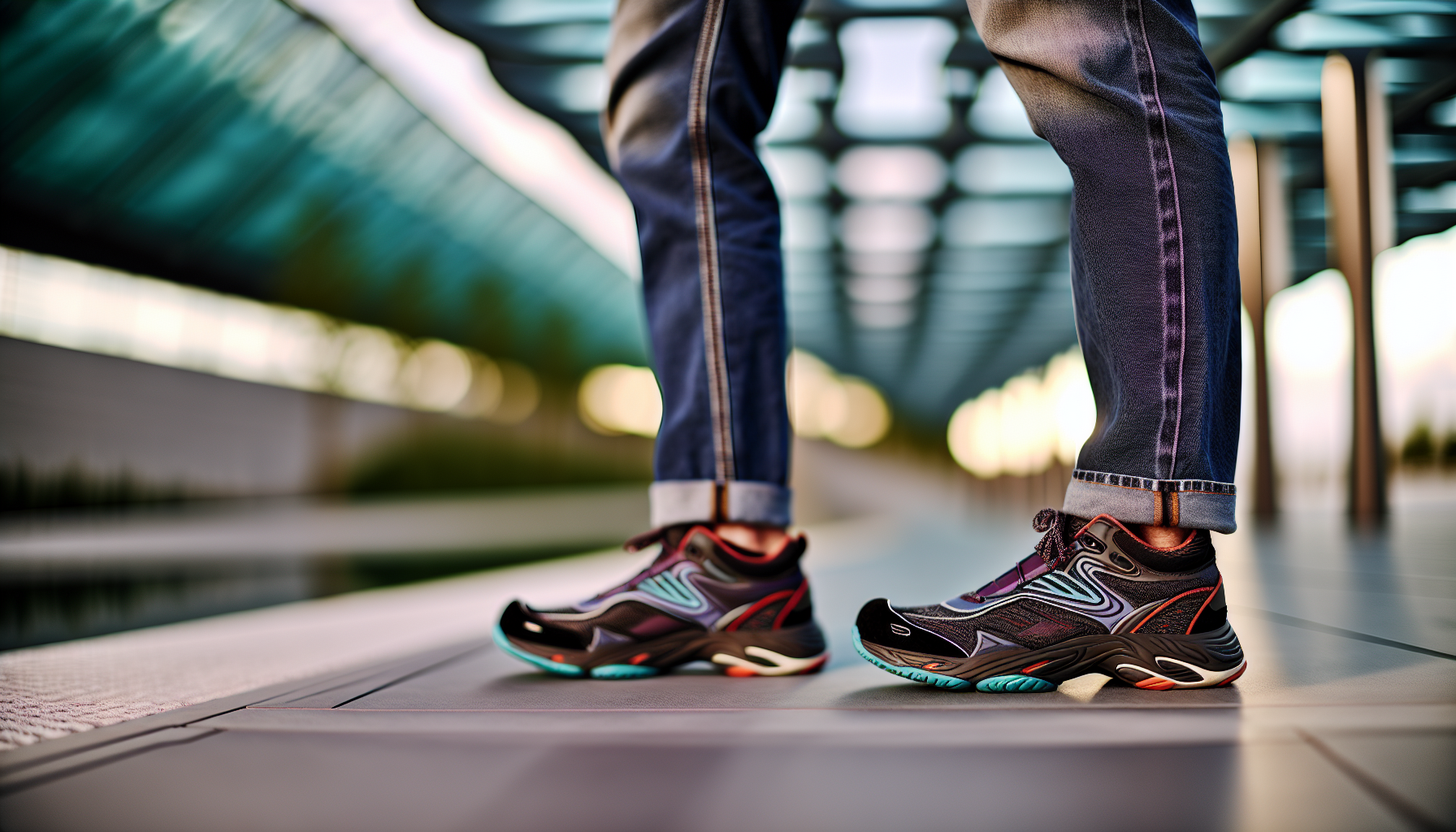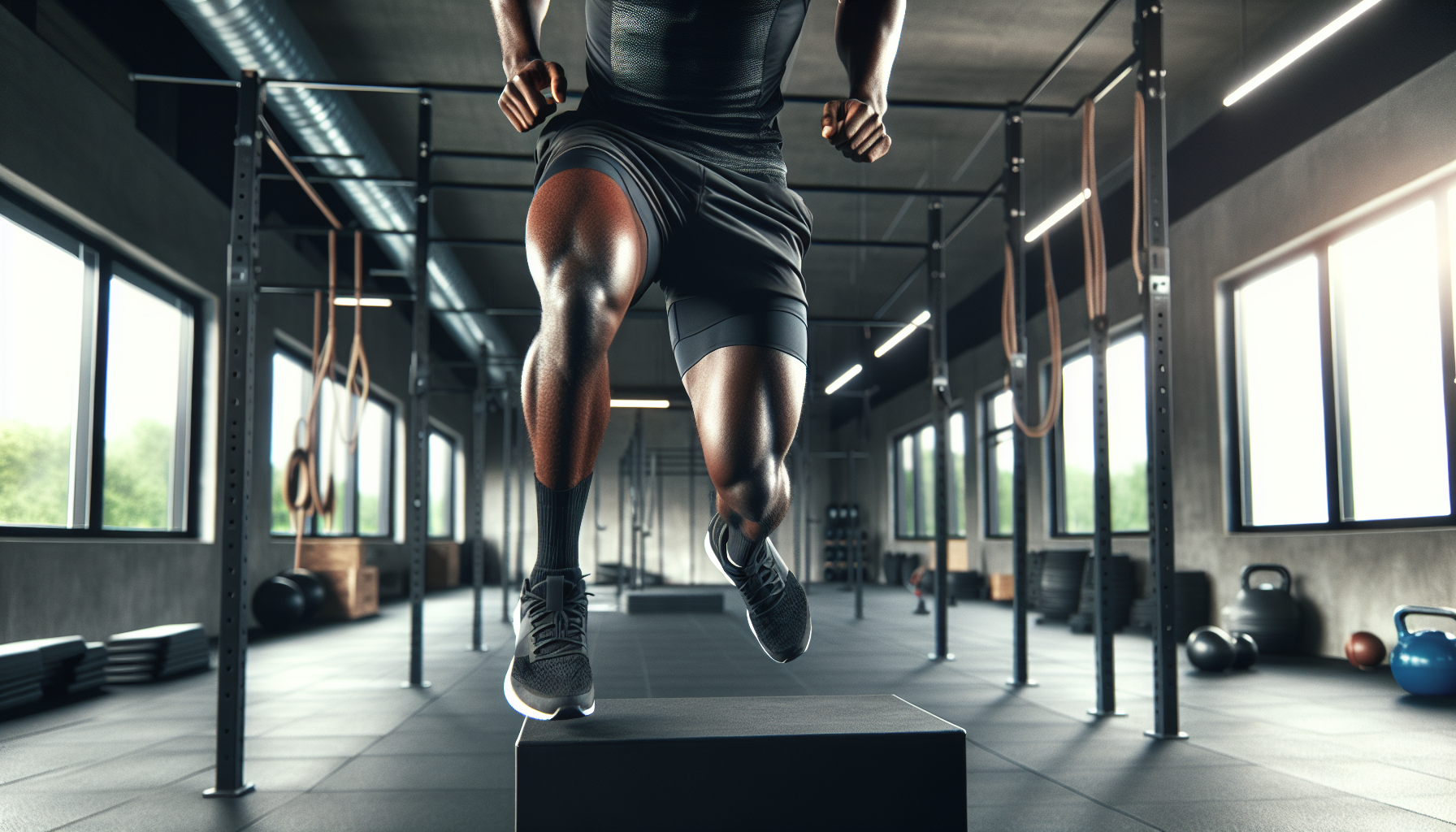Concerned about meniscus injuries? Cut through the jargon with our concise “preventing meniscus injuries tips for maintaining knee health and reducing risk factors.” From strategic exercises to lifestyle tweaks, we cover the vital steps to protect your knees. Stay on track with our straight-shooting advice and keep your knees flexing smoothly for years to come.
Key Takeaways
- Meniscus tears are a common knee injury often due to anatomical and biomechanical factors, and understanding signs, symptoms, and diagnosis is crucial for timely repair and to prevention of long-term damage.
- Maintaining muscle strength and balance, particularly in the quadriceps and hamstrings, is essential for knee stability and can reduce the risk of meniscus injuries and the need for knee replacement surgery.
- Proper movement techniques, footwear selection, and orthotic use play significant roles in protecting the knees from meniscus damage, while sports medicine recommends exercises that balance strength training with plyometrics and core conditioning to safeguard knee health.
Understanding Meniscus Function and Vulnerability
The menisci, nestled in the knee joint as fibrocartilaginous cushions, are vital to absorbing shock with every stride. These crescent-shaped pads reside between the femur and tibia, playing a critical role in stabilizing and evenly distributing weight across the knee. While they adeptly manage movement stresses like natural shock absorbers, their resilience has its limits. Injuries such as a torn meniscus can occur especially within the medial meniscus due to its strong connection to the medial collateral ligament. The healing process for these tears varies—while those occurring in the outer third of the meniscus benefit from ample blood supply aiding recovery, those in the avascular inner two-thirds face healing challenges.
It’s important to acknowledge that most tears result from complex dynamics involving knee anatomy and exerted forces. Awareness of symptoms associated with a meniscus injury is essential for detecting issues early on. This knowledge facilitates the prompt pursuit of necessary treatment options such as repair strategies which help circumvent chronic damage while preserving fluidity in knee motion.
The Importance of Muscle Strength for Knee Stability
The health of the knee is greatly dependent on the robust strength of the thigh muscles, where particularly, the quadriceps play a crucial role in fortifying and protecting the knee from everyday stresses. Should these muscles weaken, it can leave our knees exposed to injury due to their reduced shock-absorbing capacity. Consequently, increasing susceptibility to common knee injuries. Alongside them are hamstrings that work in opposition to quadriceps’ power ensuring stability and aiding in preventing an injured knee from progressing into a condition necessitating a knee replacement.
Yet having muscle strength is not enough—it’s about achieving a balance between various muscle groups for optimal protection of our knees. Leg strengthening exercises recommended by specialists focus on both quadriceps and hamstring conditioning as they act as shields against potential harm to our knees. We mustn’t disregard how pivotal gluteal muscles are when it comes to maintaining stability within this joint system—hence why drills such as side leg lifts are instrumental. These help bolster these particular muscles so that they’re ready to uphold strong support around the knee area thus reducing chances of experiencing difficulties or lockings associated with troubled knees.
Optimal Movement Techniques to Protect Your Knees
Movement is an intricate dance defying gravity, where mastering technique reigns supreme. In the act of squatting correctly, it mirrors a well-rehearsed ballet by ensuring knees and toes align with the chest held high – a tribute to maintaining sound knee joint health. Likewise, running melds into a rhythmic interplay of footfalls. Aiming for 180 steps per minute combined with rotating leg movements helps soften each landing’s impact on the knees. Adopting proper form in your stride—striking with the middle part of your foot while keeping your knees gently bent—is akin to wearing armor against meniscal tears.
Yet nuances in motion are not limited to just vigorous pursuits. The mere action of standing up after sitting for extended periods can put undue pressure on one’s knee if done without attentiveness. Interspersing short bouts of activity throughout one’s day sustains flexibility and promotes graceful movement within the knee joints, thereby preventing discomfort associated with stiffness in these areas from creeping in. Caution is advisable though: often it is that unanticipated pivot or abrupt bending that may be traitorous to our knees’ integrity, leading tragically to an ominous meniscus tear.
Footwear and Orthotics: Guarding Against Meniscus Damage

Much like a fortress relies on its surrounding defenses, the knee requires appropriate protection—specifically well-chosen footwear—to defend against meniscus injuries. Selecting shoes goes beyond style. They act as guardians of your knees’ well-being by reducing strain and helping to ward off damage to the meniscus. Yet, when our foot support systems fail due to issues like flat feet or excessive inward rolling of the foot while walking (overpronation), it’s often our knees that suffer, leading down a road riddled with meniscal tears.
Orthotic insoles step in as valiant protectors for your soles. Tailored just for you or picked from standard options, these devices work wonders at redistributing forces across the feet, aligning important aspects necessary for healthy knee function, and increasing shock absorption—all vital efforts in shielding your meniscus from harm’s way. By rectifying discrepancies within one’s stance and enhancing overall stability during movement, orthotics are instrumental in every step taken towards evading potential risks associated with acquiring a tear of the meniscus.
Sports Medicine Insights: Training Regimens to Safeguard the Knee

Within the domain of maintaining knee health, sports medicine acts as a guiding force in circumnavigating the pitfalls associated with knee injuries. Achieving balance in muscle strength, particularly between hamstrings and quadriceps, stands as a fundamental strategy to fend off knee pain and stave off the gradual onslaught of osteoarthritis. As seen through sports medicine’s perspective, employing exercises such as isometric settings for quadriceps or leg raises while keeping them straight serves as vital measures that fortify the knees against potential damage.
Fostering strength alone isn’t sufficient. It’s also about mastering movement. Movements like clamshell exercises and leg extensions meticulously shape surrounding muscles to solidify knee stability without pushing it into high-risk territories. The regimen is well-defined: integrating strength workouts with plyometrics and routines aimed at core strengthening constructs an intricate defense around your knees—a safeguard significantly reducing risks of meniscal tears.
Weight Management: A Key Factor in Meniscus Health

The pressure on the knees is a tale of scales and pounds, where every extra ounce can erode the meniscus’ integrity. Higher BMI not only strains the cartilage but also threatens the meniscus’ noble duty of load distribution. The consequence of this burden is a cascade of changes that can lead to osteoarthritis, transforming the resilient meniscus into a shadow of its former self.
Yet, there is hope in the form of weight loss. Shedding excess can be a lifeline, preserving knee cartilage, protecting the menisci, and slowing joint degeneration to a crawl. A triumph in weight management, particularly significant weight loss, is a victory for meniscus health, reducing damage and cartilage degeneration, and bringing relief to those burdened by pain.
The Role of Nutrition in Joint Health
Imagine a grand feast that not only delights the taste buds but also serves as a boon for your knees. In this special dining experience, an anti-inflammatory diet plays host while joint discomfort and chronic inflammation don’t make it past the door. Such dietary strategies act like protective shields for internal knee components including cartilage and ligaments, safeguarding them against the stealthy clutches of inflammation. The cornucopia of phytochemicals and antioxidants found in foods such as leafy greens, cherries, and green tea create a symphony of relief by lowering inflammation levels within the joint structure—a performance so compelling that it stands toe-to-toe with even ibuprofen’s formidable ability to soothe pain.
Yet fruits and vegetables are not solitary heroes in this skirmish with inflammation. By slashing processed sugars from one’s diet, you effectively strip away weapons from inflammatory forces. Halting their ability to signal cytokines induces swelling—thus cultivating a tranquil habitat around the knee joint tissues where serenity reigns supreme over turmoil.
Understanding and Avoiding High-Risk Activities
High-intensity contact sports are often irresistible, but they frequently result in meniscus tears, which stand as some of the most prevalent knee injuries. The sharp movements and quick directional changes characteristic of games like basketball and football typically cause acute trauma to the knee’s meniscus. A more forgiving alternative lies with low-impact activities such as swimming or cycling that allow fitness enthusiasts to stay active while protecting their knees from harm.
By steering clear of risky activities like deep squats and intense athletic maneuvers, individuals can protect their meniscus from excessive wear. Opting for safety rather than the rush associated with contact sports is a wise decision that helps safeguard the crucial inner two-thirds portion of the meniscus—a choice that supports lifelong mobility and active living.
Recognizing Early Signs of Meniscus Wear
The subtle signs of wear on the meniscus can be easily missed, yet those who listen closely may detect its faint warnings. Early indicators such as a locked knee, stiffness, or a popping feeling are common precursors to a tear in the meniscus and call for watchful awareness. The presence of persistent pain after physical activity has stopped or unrelenting swelling signals damage to the meniscal tissue that demands medical attention.
Acknowledgment of these signs is crucial not only for easing discomfort related to knee pain but also for preventing Degeneration, which could disrupt one’s daily life rhythmically. Should one experience ongoing knee pain or instances when the knee locks up, it should serve as an unmistakable signal prompting consultation with healthcare providers who can diagnose whether there is indeed a torn meniscus and guide towards appropriate remedial measures.
Rehabilitation and Physical Therapy: Preventative Measures
Navigating the path to recovering knee strength often involves engaging in rehabilitation and physical therapy routines, where taking preventive actions becomes part of everyday practice. To bolster the knee and avert future damage, some beneficial exercises include:
- Engaging in quad sets
- Performing mini squats
- Undertaking isometric quadriceps setting
- Doing straight leg raises
Executing these workouts consistently contributes to enhancing knee fortitude, protecting against other potential injuries within the knee area, and promoting greater stability for times ahead.
Within the domain of physical therapy lies an essential process for renewing functionality within the knee joint. Typical exercises prescribed during recovery include:
- Balance and proprioception activities aimed at regaining stability
- Plyometrics along with neuromuscular training designed to ready the knee for demanding tasks
- Muscle-strengthening maneuvers that reinforce support around the joint
- Range-of-motion movements intended to augment flexibility
- Functional drills created to mimic actual motions encountered daily
With adherence to these recommended therapeutic practices, not only does one witness increased resilience in their knees, but also minimize meniscus tear incidents—thereby supporting natural healing processes pertinent specifically when dealing with a torn meniscus.
Minimally Invasive Procedures for Knee Preservation
In instances where conservative treatment for knee issues does not suffice, surgical intervention is carried out with utmost precision and minimal invasion. Arthroscopic surgery represents the cutting-edge approach to meniscus repair, involving small incisions coupled with specialized instruments that ensure a less invasive process. This technique has become the method of choice due to its potential to delay osteoarthritis while promising restoration of knee functionality within months.
When there’s considerable loss of meniscal tissue, a ray of hope shines through via meniscus transplant surgery. In such procedures, donor tissue is used to replace the extensively damaged meniscus—providing knees that have endured chronic symptoms without devolving into severe arthritis with an opportunity for rejuvenation and enhanced mobility.
Preparing for Recovery: What to Do If Your Knee Remains Painful
The journey toward healing from knee ailments requires both careful attention and time. Initially, adhering to the RICE protocol offers relief for pain and swelling in the knee. Yet if this discomfort continues over some time, it becomes imperative to consult with an orthopedic surgeon.
Such ongoing symptoms of pain and swelling should not be dismissed as trivial. They serve as urgent warnings that there may be an underlying injury to the knee. Pursuing a professional medical assessment is not conceding defeat, but rather making a wise decision aimed at preserving your knee’s longevity and function.
Summary
Navigating the complex world of knee well-being, our exploration has covered the roles of meniscus function, muscular strength, and proper movement practices among others. Equipping ourselves with suitable shoes acts as a protective shield while engaging in physical therapy brings healing benefits to our knees. The health of one’s meniscus isn’t left up to chance. It is rather a conscious commitment involving strategic choices that strengthen the knees against wear from aging and vigorous activities.
May this collection of knowledge act as your guiding light towards an era where knee pain is but a forgotten concern, replaced by the daily pleasure of unrestrained motion. Venture ahead empowered by preventive insight, vigilant about potential issues, and confident in recuperative strategies—ensuring each stride celebrates the enduring vigor of your knees. Contact Plancher Orthopaedics today to see how we can help you with a meniscus tear!
Frequently Asked Questions
What are 3 signs of a meniscus tear in the knee?
Symptoms indicative of a meniscus tear typically include experiencing a popping sensation in the knee at the time of injury, followed by swelling or stiffness and pain which is often exacerbated when twisting or rotating the knee. There might be challenges with completely straightening the knee and it may feel as though it’s “locked” during attempts to move it.
What are the precautions for a torn meniscus in the knee?
To help reduce pain and promote healing for a torn meniscus in the knee, it is important to rest the leg, apply ice for 20 minutes at a time several times a day, wrap the knee with an elastic bandage, and elevate the leg above the heart. Additionally, avoid activities that aggravate the knee pain and consider using crutches if the pain is severe.
How do you protect the medial meniscus?
To safeguard the medial meniscus, one should focus on bolstering the muscles that support the knee. Employing a knee brace can be beneficial if there is an existing weakness in the knee. It’s also crucial to progressively intensify exercise routines and ensure wearing proper sports footwear.
Adhering to these protective measures is instrumental in avoiding harm to the medial meniscus of your knee.
What are the risk factors for a meniscus injury?
Individuals engaged in contact sports or activities that require pivoting are particularly susceptible to meniscus injuries. The likelihood of sustaining a torn meniscus escalates with age and obesity.
How do you prevent a meniscus injury?
To minimize the risk of a meniscus injury, it’s essential to fortify the supporting muscles around your knee and ensure you’re wearing suitable athletic footwear tailored for your specific sport. Adequate muscle conditioning and proper shoes are key in lessening the likelihood of sustaining an injury to the meniscus.





 William D. Murrell, MD
William D. Murrell, MD Thomas B. Evely, DO
Thomas B. Evely, DO Clifford Voigt, MD
Clifford Voigt, MD Karthikeyan Chinnakkannu, MD
Karthikeyan Chinnakkannu, MD Max N. Seiter, MD
Max N. Seiter, MD Demetris Delos, MD
Demetris Delos, MD Lauren M. Fabian, MD
Lauren M. Fabian, MD